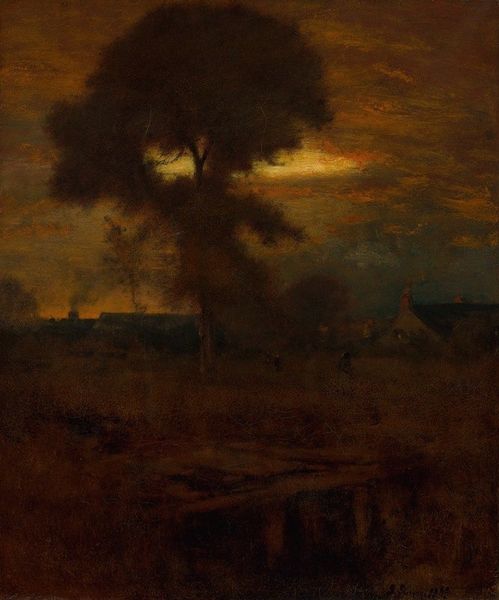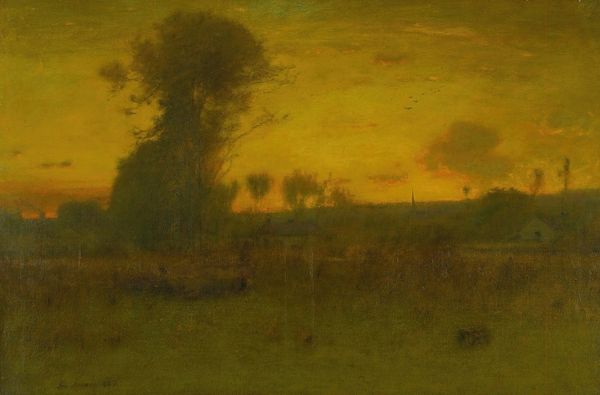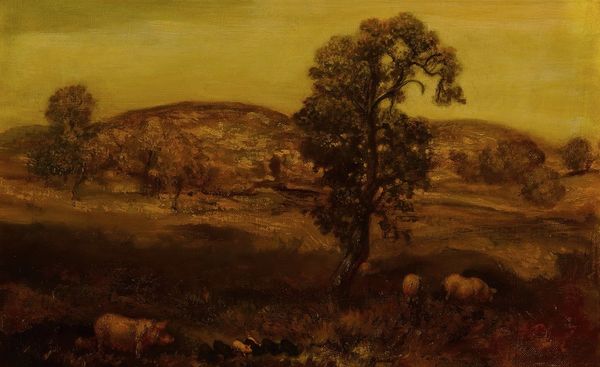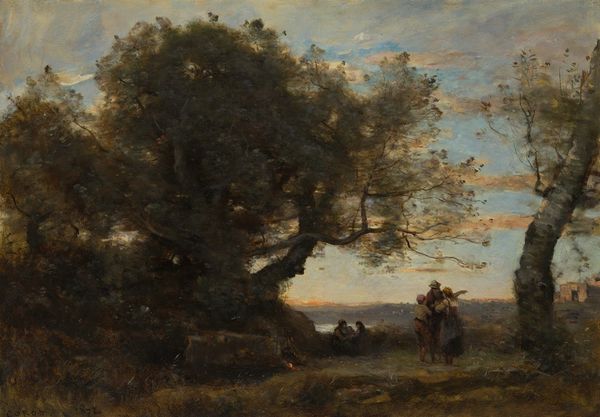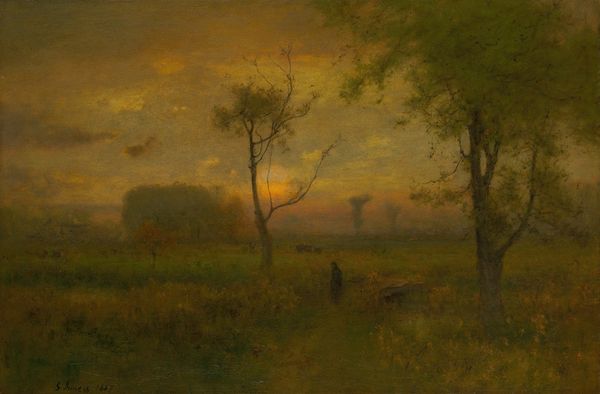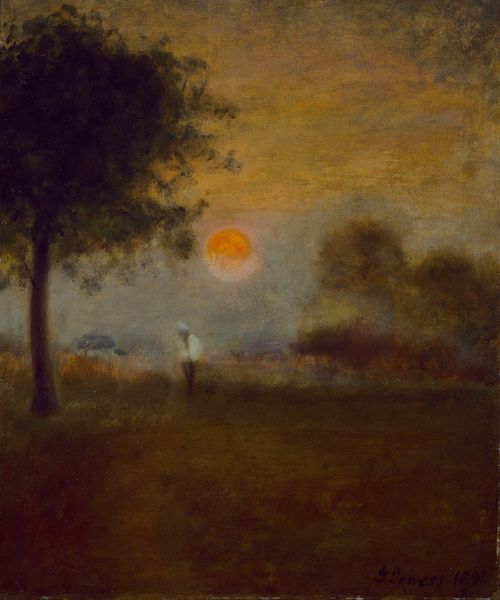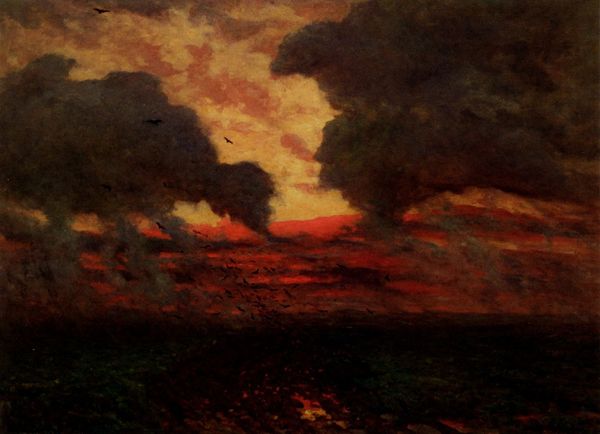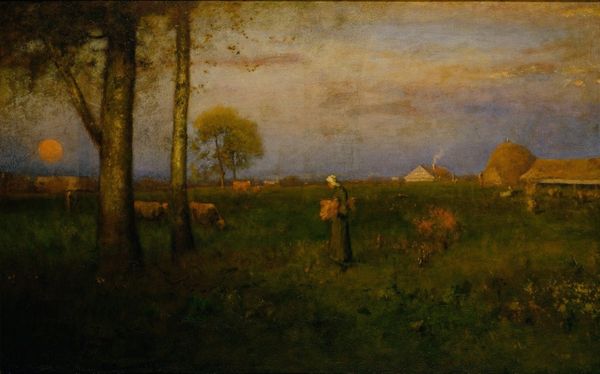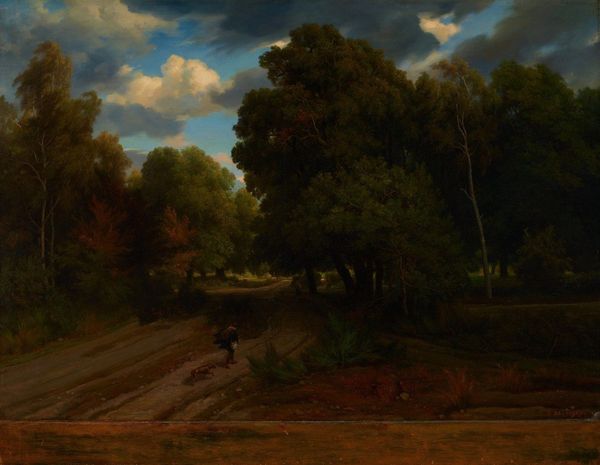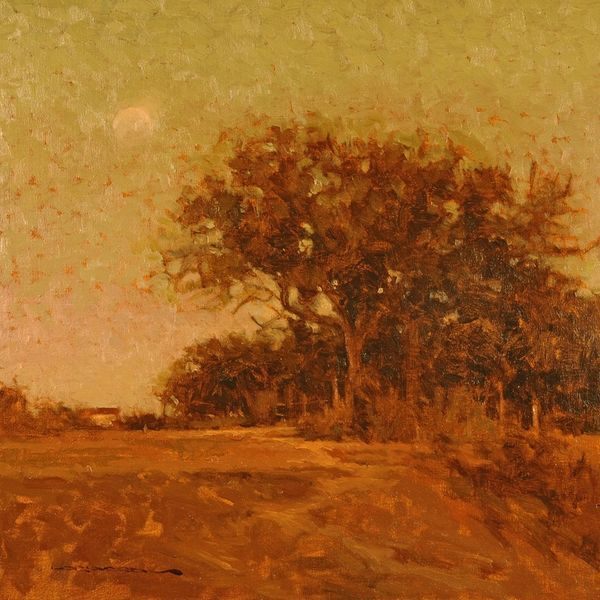
Copyright: Public Domain: Artvee
Curator: Oh, I find this scene incredibly soothing. It really seems to be embracing the end of a day. Editor: It’s George Inness's "Evening Glow" from 1883. A prominent example of American Impressionism that fits into the landscape tradition established by the Hudson River School, rendered in oil. Curator: The twilight certainly amplifies a range of well-established symbols. Notice the lone figure and the way he leans into his staff as he heads back home under a dark sky. Is it melancholic, or quietly accepting? Editor: I’d say it's both. Inness was deeply interested in spirituality. You can almost feel the influence of his engagement with Swedenborgianism. He portrays the unity of the spiritual and natural worlds by blurring the lines between the figure and the land. The landscape feels very inhabited. Curator: Absolutely, the symbolism is rich here. Birds flying off, and that setting sun…it reads like an entire chapter on endings, as old ideas began to fade and America began to change so much, but it uses well established conventions to evoke those anxieties. Editor: And Inness uses these conventional landscapes, the pictorial structure and compositions that have such long lineage in American painting, to pose radical challenges to an emerging industrial America by highlighting the values of the pastoral and the simple life. I think this is a turn toward a deep understanding of art's power to console and express yearning for community in the face of this modern experience. Curator: Do you feel like Inness does all this knowing that those social concerns would ultimately be felt looking at it? I suppose what I'm asking, could this all be completely unintentional on Inness's part? Editor: Given Inness’s spiritualism, I’m confident it wasn’t unintentional. Rather, his work is a social critique filtered through a profound symbolic consciousness, and of course that all finds expression through well known visual tropes that already felt weighty and appropriate. Curator: Thinking about the weight of familiar symbols is key to unraveling this work for modern audiences. It truly stands as an invitation to feel, even beyond our awareness of those historical issues. Editor: Precisely. The image remains compelling precisely because it layers cultural anxieties with enduring, universal symbols of nature and mortality. It’s a powerful combination.
Comments
No comments
Be the first to comment and join the conversation on the ultimate creative platform.
